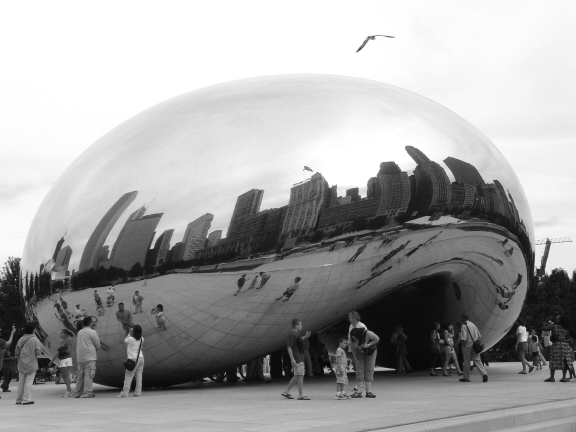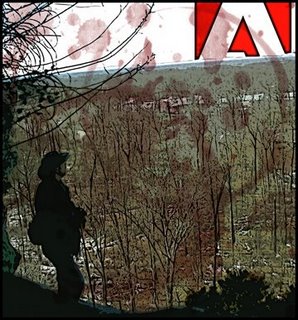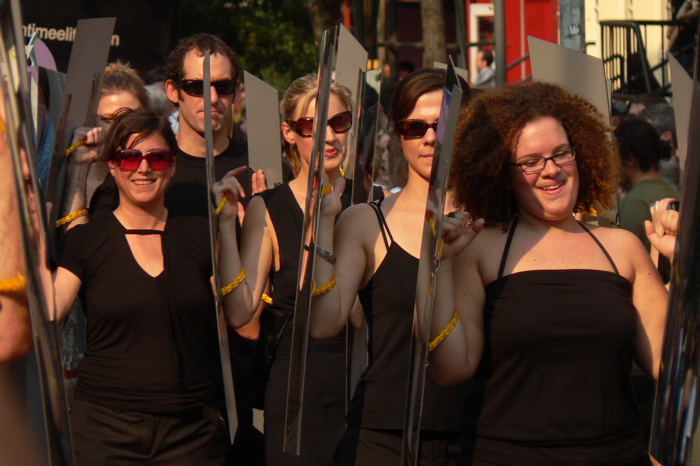Social technologies have been around for decades, but mainstream use of social media platforms has grown exponentially only over recent years. This column explores uses of social media platforms relevant to the arts community: by artists, art-based organizations, and the general audience. Leading off the column is a post from New York-based artist, An Xiao.
If there’s anything revealed about the use of social media technologies in the Iranian election, it’s that Twitter, Facebook and other social spaces online have become a new form of public space. Like any public space, social media serve as a place to meet with friends, people watch and, as we’ve seen, even protest. The key difference with this digital public space is one of scale and access, as users find ways to reach an international and growing user base, limited only by access to a computer or mobile phone and, to a certain extent, a common language.
One question I explore in my social media work is how this new public space can become a site for public art. I recently founded @Platea, a global online public art collective, to explore this very issue, and to take some salient features of public art–performance, displacement and activation, engagement–and both translate and transform them into the realm of online media.

Cloud Gate by Anish Kapoor (photo by An Xiao)
During the week of May 3-9, @Platea gathered more than 40 individiduals from a half dozen countries to participate in @Platea’s Project II: Co-Modify, a public performance art project. The idea was simple. First, each performer chose a megacorporation to be “sponsored by” for the week. They then acted it out, imagining the sponsorship as defined by their company. The project was designed firstly as a commentary on the commodification of social media, and, by extension, our social lives in general, but also as a look at the possibilities of collective performance art in the realm of social media.
The performances ranged from the poetic to the playful, as the social media feeds of the performers and their friends/followers became a veritable online stage. Jonny Gray, a professor at Southern Illinois University Carbondale, reflected and self-reflected on the nature of branded existence and sponsorship, while Jorge Alvarez, a college student in Puerto Rico, dressed up as a human Q-Tip to explore and critique his sponsorship. The broad range of the performances was truly a testament to the creativity of those participating and their diverse backgrounds.

Jonny Gray, "sponsored by" Adobe
The most remarkable part for me, however, was to witness how Co-Modify organically embodied the spirit of Web 2.0 culture. Unlike a regular stage, the performance became truly interactive. @Platea members around the world who’d never met each other co-performed their sponsorships, sharing puns and fused imagery, while non-performers joined in and egged the performers on. The public art project, rather than becoming one-way (artist to audience) or even two-way (artist to audience, audience to artist), became truly multi-way, as artists and audiences spontaneously collaborated, shared and engaged.
@Platea’s next public art piece, hopes/dreams/fears, continues in this study of connectivity and interactivity on a global scale and breaks into the physical realm. With this project, we are gathering the hopes, dreams and fears of individuals both online and offline in the language of Facebook status updates (i.e., in the third person), to then broadcast these over time via a dedicated Facebook page.
I launched hopes/dreams/fears during a presentation I gave at the Brooklyn Museum and continued it during Figment on Governor’s Island. At the same time, the @Platea Steering Committee and members in Illinois, Puerto Rico, Los Angeles, Switzerland, the United Kingdom, Australia and a number of other locales have begun collecting the hopes, dreams and fears of those in their communities.
As those of us who use social media know, the collected status updates of an individual over time can paint a picture of who he or she is. It’s an idea often referred to as “ambient awareness“: the aggregate of little details expressed over social media leads to something of a picture of an individual. Can the same thing happen over time amongst a slice of the world community? How does seeing the unfiltered thoughts of strangers alongside the updates of your friends affect the otherwise-habitual experience of viewing your News Feed?

Performers during Deitch Art Projects' Art Parade 2006 (photo by An Xiao)
During my time blogging for Art 2.1, I hope to explore a number of issues around social media and art, and the implications of the emerging Web 2.0 ethos on the practice and application of art. Social media have allowed for an unprecedented level of interactivity, access and agency in all realms, and I think art has only begun to explore their potential.
For hopes/dreams/fears, we have nearly 500 responses so far, from a dozen countries. In the spirit of Web 2.0 and open source culture, I invite you to participate in @Platea’s latest public art project by visiting our submission form and filling out your own response. Then, be sure to join our Facebook page to watch it all unfold starting July 1.
Photographer and digital media artist An Xiao studies the emerging 21st century culture, as manifest in cities, nature and individuals, through the lens of eastern and western philosophy. Her social media-based projects have been featured with the Brooklyn Museum, The Guardian, ARTNews, NYFA Current and others. She founded and directs @Platea, an online public art collective. She tweets and blogs with some regularity, and her work can be found online at www.anxiaostudio.com.



Pingback: 062009WK4.1 AVD - digital accumulations
Pingback: Blogging for Art:21 Blog
Pingback: Wednesday Clips 7/1/09: Special Late-Night Mourning Edition : Bad at Sports
Pingback: hopes/dreams/fears & Art (plus) Web 2.0 « SL Art HUD Blog Thingie: